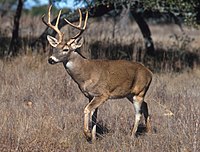
Estimating the self‐thinning boundary line for oak mixed forests in central China by using stochastic frontier analysis and a proposed variable density model
Sign Up to like & getrecommendations! Published in 2022 at "Ecology and Evolution"
DOI: 10.1002/ece3.9064
Abstract: Abstract A suitable self‐thinning model is fundamental to effective density control and management. Using data from 265 plot measurements in oak mixed forests in central China, we demonstrated how to estimate a suitable self‐thinning line… read more here.
Keywords: density; mixed forests; oak mixed; model ... See more keywords

The effect of the calculation method, plot size, and stand density on the top height estimation in natural spruce-fir-broadleaf mixed forests
Sign Up to like & getrecommendations! Published in 2019 at "Forest Ecology and Management"
DOI: 10.1016/j.foreco.2019.117574
Abstract: Abstract Stand dominant height or top height (TH) is a crucial variable for the measurement of potential site productivity, forest growth and yield projection, biomass estimation, structure stratification, and determination of development stages. There are… read more here.
Keywords: estimation; plot; stand density; calculation ... See more keywords

Comparing the predictions of gap model with vegetation and disturbance data in south-eastern Canadian mixed forests
Sign Up to like & getrecommendations! Published in 2020 at "Forest Ecology and Management"
DOI: 10.1016/j.foreco.2019.117649
Abstract: Abstract The lack of long term independent historical data constitute a major impediment to the further improvement and validation of forest simulation models. In this study, we evaluate the degree to which the gap model… read more here.
Keywords: disturbance data; gap model; model; maple ... See more keywords

Multiple factors modulate tree growth complementarity in Central European mixed forests
Sign Up to like & getrecommendations! Published in 2018 at "Journal of Ecology"
DOI: 10.1111/1365-2745.12846
Abstract: Summary 1.Mixed species forests can often be more productive and deliver higher levels of ecosystem services and functions than monocultures. However, complementarity effects for any given tree species are difficult to generalize because they can… read more here.
Keywords: mixture types; central european; growth complementarity; complementarity ... See more keywords